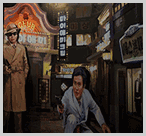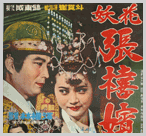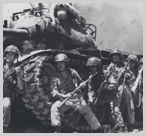





-
Section 1 sheds light on the early period in IM’s career since he makes his debut in 1962,
when he laid foundation for film direction by mass producing films in different genres.
This exhibition showcases video clips, movie posters, and other items from IM’s early productions.
Moreover, studies on IM and his films at home and abroad, as well as other press materials, are housed
in this section. Visitors can browse though IM Kwon-taek: History through Newspapers, published by
Im Kwon Taek Film Archive & Research Center.

-
During this period, IM Kwon-taek produced about 60 films spanning several genres such as action and period films, melodrama, comedy, horror
and even propaganda films for the saemaeul (new village) campaign. Im learned film language from Hollywood gurus like John Ford, Billy Wilder
and William Wyler. The beginning of IM’s career coincides with the first period of Korean film renaissance (1963~1973). It was the time when
IM started constructing his film world.

- Debut Film, Farewell to the Duman River (1962)
-
Im Kwon-taek debuted at 28 with a war film featuring an all-star cast. Set in Manchuria during the Japanese occupation,
Farewell to the Duman River portrays the intense struggle between Korean independence fighters, the Japanese army and
bandits. It was celebrated not only for being a box office hit but also for its outstanding action scenes, in particular
the battle scene with ski troops racing down snow-covered mountain ridges.

- Action Films - Statelessness and Lawlessness
-
Korean action films created a boom in the early 1960s and went on to produce a variety of sub-genres. Im's action
film filmography is a reflection of this history. From 1968 to 1973, he focused on two kinds of films. One is urban
crime films portraying the betrayal and conspiracy among mobsters. The other is Manchurian action films portraying
the Koreans' struggle for independence. Im stopped making action films after Commando on the Nakdong River (1976)
but returned to the genre with the General's Son series in the early 1990s.

- Historical Dramas - Discovering Tradition
-
IM Kwon-taek's historical dramas can be divided into two types. His earlier films mainly deal with power struggles
and factional strife in the royal court. But from 1967 to 1972, IM consistently produced swordsman films. Interestingly,
the origin of IM's film aesthetics can be found in his early historical dramas. Since the genre requires long hours of
indoor shooting, IM used the opportunity to master a filming technique that brings out spatial depth by utilizing the
structure of traditional Korean houses. IM once said that "the camera follows life around," an expression that is closely
linked to the film world he went on to develop - a world that delves deep into the lives of common folks.

- State Policy Films - a Training Ground
-
According to the fourth revised Film Act promulgated on February 16, 1973, the Korean Motion Picture Promotion
Corporation was mandated to produce films embodying the ideology of the yushin (revitalizing reform) regime.
Im Kwon-taek’s The Testimony (1973), an anti-communist film about the Korean War, was the first of such films.
It was produced with full government support. Filmed in a village in Gangwon Province, the movie offered spectacular
battle scenes featuring actual armored and infantry units. It also succeeded in drawing huge crowds. Another state
policy film by Im is Wives on Parade (1974), in which housewives band together to revive their rural village through the saemaeul (new village) campaign.

























